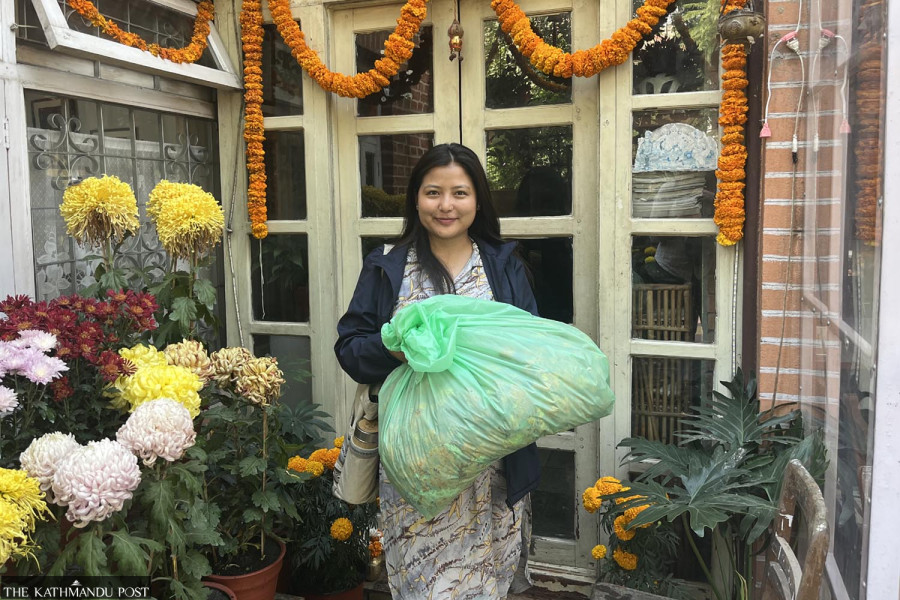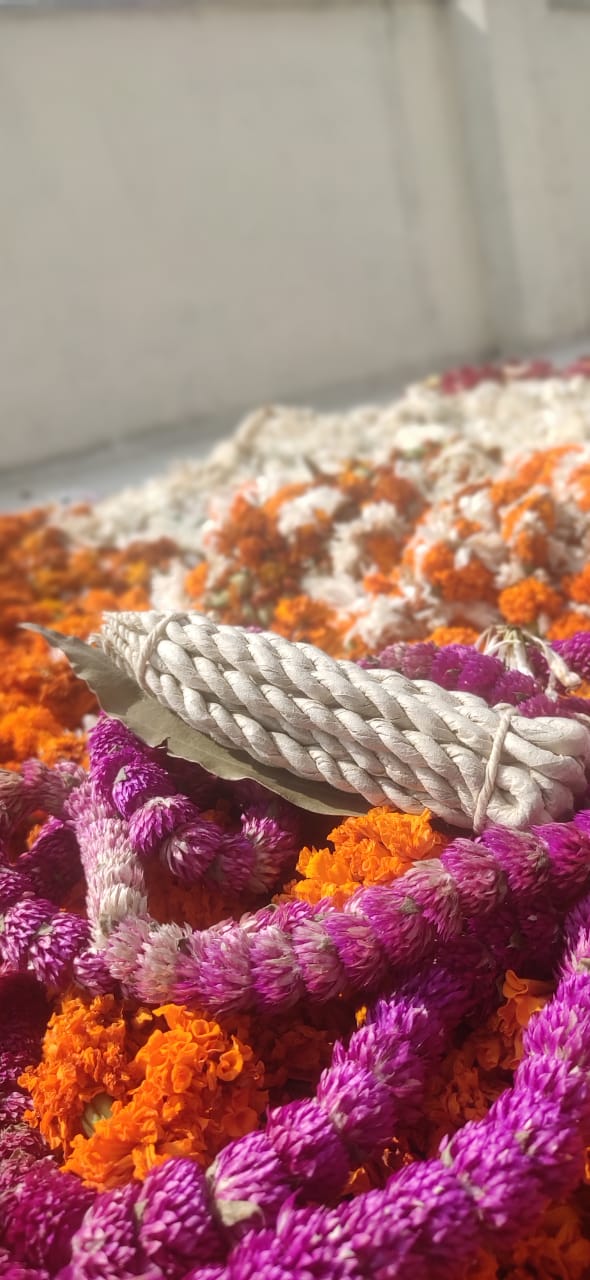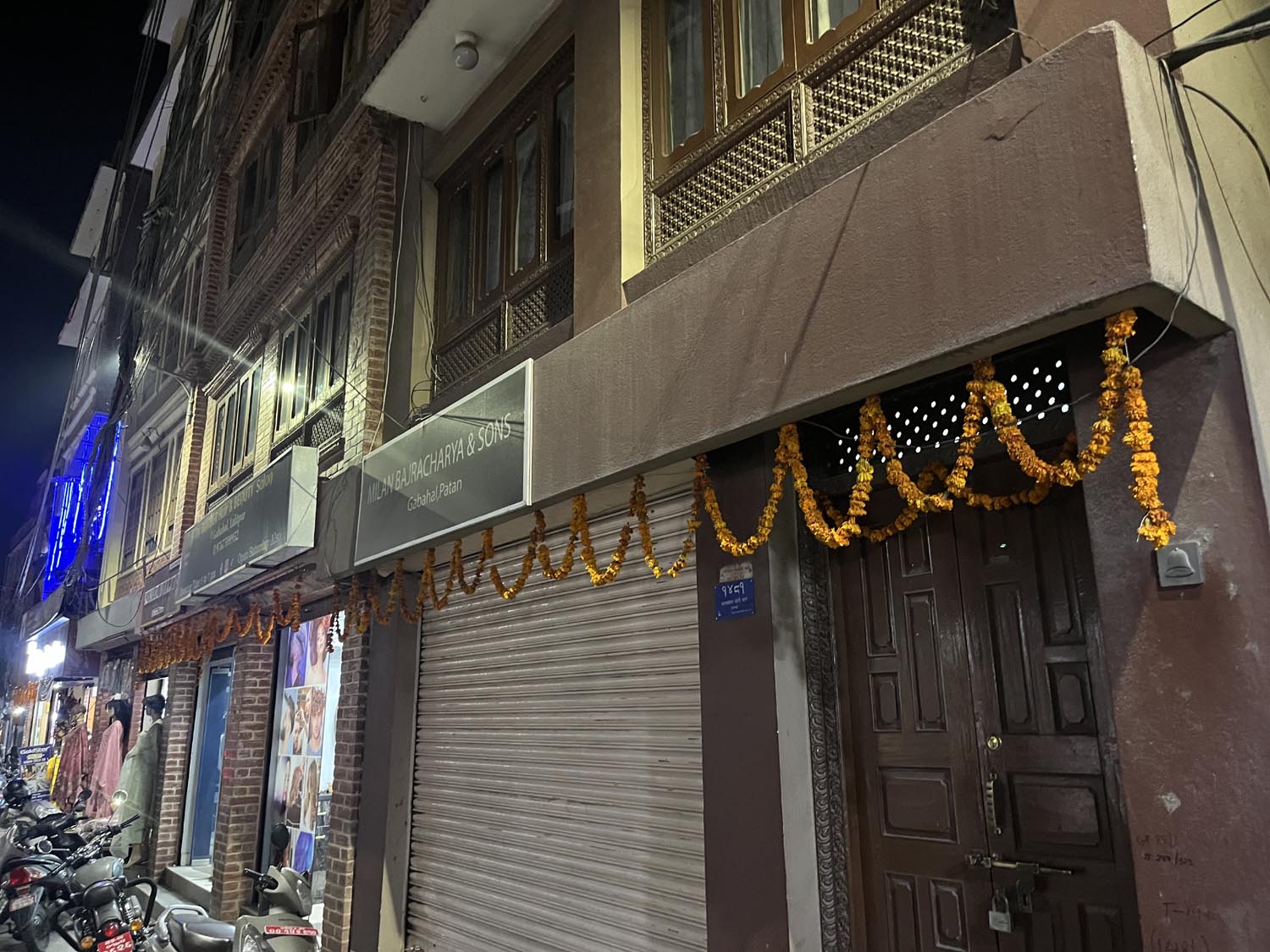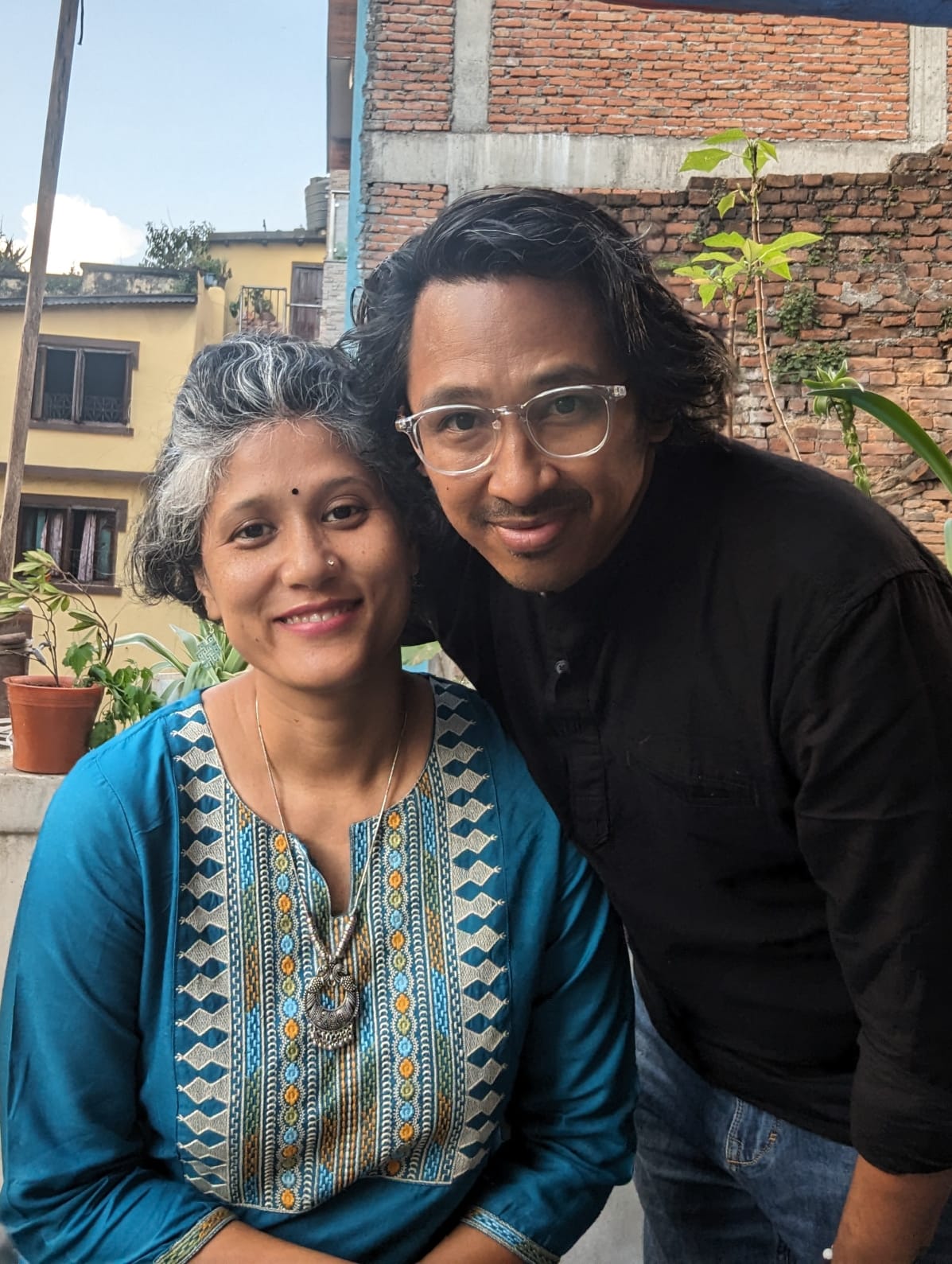National
A Nepali green initiative turns floral waste into aromatic rope incense
Bhoomithan collects Tihar flowers, crushes them and crafts the powder into ‘phoolbatti’ with other ingredients.
Ellie Davis
Amod Karmacharya co-founded the environmental non-profit organisation Clean Up Nepal in 2014, but eight years later, in 2022, he decided he wanted to create a new environmental non-profit that could be more in touch with the needs of Nepali people.
Two years after co-founding Bhoomithan — which means sacred Earth — Karmacharya feels that he can work more effectively to bring environmental solutions to Nepal.
Most recently, Karmacharya and Goonja Shrestha, Bhoomithan’s other co-founder who is also married to Karmacharya, have focused on recycling flowers to make phoolbatti, or rope incense. As of Monday, the couple has gathered 84.7 kgs of donated flowers from Tihar that would have otherwise been thrown away.
For months Karmacharya and Shrestha have been developing a sustainable alternative to typical stick incense. The couple knew a craftswoman who makes incense out of lokta paper, and they spent six months working together to develop six different scents of rope incense made in part from recycled flowers.
“People use the stick incense because they think it smells good, but it's all infused with chemicals,” Shrestha says.
Karmacharya and Shrestha sort and dry the flowers on their terrace for three days, then put them into a dehydrator, and finally blend the dried petals into powder. They distribute the materials to five women who twist the powder and other ingredients into the rope incense. The couple then sells the products mostly at local farmers' markets.
Anjana Malla, founder of Deego Nepal, a sustainable brand that offers plastic-free personal and home products, donated a bag of flowers in Lalitpur on Friday. In the biodegradable bag made out of cornstarch, not only did she bring her own flowers, but also flowers that she gathered from her friends and nearby businesses.
“In every shop, people put flowers for decoration for Tihar,” Malla says. “There are so many shops that I see flowers, and they are thrown away.”
Shrestha encountered some difficulty convincing people to donate their flowers because some believed that the flowers should be thrown in the river as a part of religious practice. “It’s very hard to penetrate that belief,” Shrestha says.
Malla hopes that people will also see the religious value in using flowers to make incense. “When we take the flowers, we convert them into something that you use for worship,” Karmacharya says. “When we talk to the community, most of them understand.”
The flower recycling project isn’t the first time Karmacharya and Shrestha have brought sustainability to religious practice. For their first project, Bhoomithan replaced the non-native trees on the Swayambhunath hill with native trees that provide food and shelter to the monkeys and birds that inhabit the area.

They prioritised biodiversity and sustainability with this project by following the Japanese Miyawaki tree-planting method: planting a variety of native trees and plant species among one another, to mimic the growth of a natural forest. “There's biodiversity, diverse trees that support each other and when you plant it, you plant it like a jungle,” Karmacharya said.
Karmacharya still serves on the board of Clean Up Nepal, though these days he is focusing more on Bhoomithan’s mission. As opposed to Clean Up Nepal, an organization that has two offices, 21 staff members, and an annual budget that has ballooned from two million rupees eight years ago to fifty million rupees today, Bhoomithan has a core workforce of only three people. At Bhoomithan, Karmacharya feels as though he has to deal with fewer hurdles with each project.
“When [the organization] is big, you lose touch,” he says. “With the donor’s pressure, even though the solutions are easy, we just go round and round. We are not allowed to solve it somehow.”

Bhoomithan functions as a non-profit company, and aims to fund itself through its products, to avoid the administrative burden associated with relying on big donors. Bhoomithan aims to prioritise the planet, people, and profit — in that order. “Planet comes first, then its people, and then hopefully profit,” says Karmacharya.
This profit doesn’t go to Karmacharya and Shrestha, but rather funds Bhoomithan’s next projects. “We have to make a profit, so that we don't go back to being an NGO and relying on donors,” Shrestha says. “We want to work for impact, and for that we understand that we have to make profit.”
Shrestha hopes that Bhoomithan will inspire people to love Earth. “We want people to understand that they are part of a very big system, and they are part of a very deep ecology, and they have to understand and respect mother nature,” she says.
The couple is currently working on developing environmental education workshops. Eventually, they hope to purchase land for Bhoomithan’s headquarters, where they can bring people in to learn about sustainability and observe a sustainable living space firsthand.





 22.65°C Kathmandu
22.65°C Kathmandu













